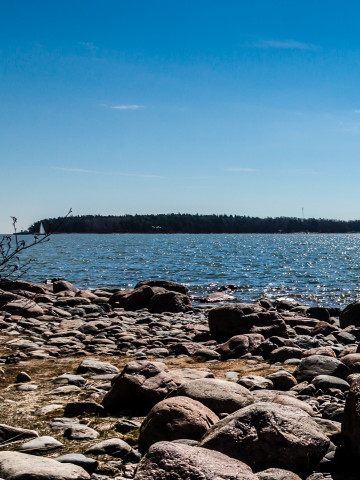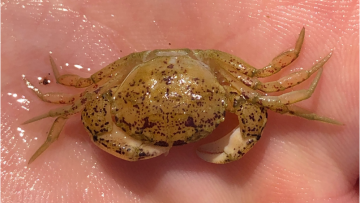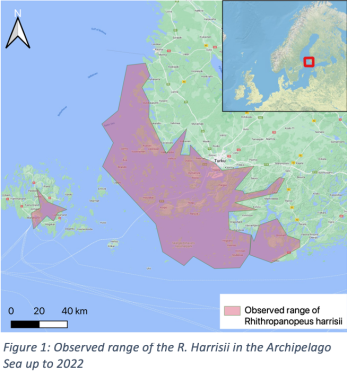
Sustainable Coastal Management
Students in the Degree Programme "Sustainable Coastal Management" writes about their studies and share their thoughts on different environmental issues.
Don’t be shellfish – the invasive crab that isn’t too invasive

Not all invasive species are equally invasive. Sometimes, species find an opening in local ecosystems adding to local biodiversity without larger disruptions to local wildlife.
The white-fingered mud crab (Rhithropanopeus harrisii) is a small crab named after its claws that are white underneath. It is originally from the Atlantic coast of North America but has become one of the most widely spread crab species globally. It was first observed in Finnish waters in 2009 in Naantali, in southwest Finland. Since then, the crab has spread steadily and has become a common sighting all over the Archipelago Sea (figure 1).

It is said that invasive species are bad for the local environment but is it true? The jury is still out on the mud crab. The crab seems to be very successfully in adapting to different surroundings. Typically, it lives on soft, muddy bottoms but in the Archipelago Sea it has also adapted to live on rocky bottoms among the bladderwracks.
As a predator, the non-native crab could potentially affect native species drastically. The crab has adapted to feed on a variety of local species, including amphipods, mussels, and small fish. It seems to be especially fond of the Theodoxus fluviatilis, snails that clean the bladderwrack from algae. However, it looks like the presence of the white-fingered mud crab does not have any considerable effect on the populations of local species or that the bladderwrack would be affected by the diminishing of the snails.
The crab is food for others, once they get the taste for it. The cormorants, perch, and four-horned sculpins have already found the crab a tasteful addition to their diets, as indicated by stomach content studies of these species. Probably though, the crab will not end up on our plates.
The crab is here to stay whether we like it or not. It seems it has found its own niche to fill in the ecosystem of the northern Baltic Sea, finding it’s place in the food chain while not disrupting the life of the other species around it. Long term effects of the crab remain to be seen, but for now, luckily, the biggest hazard from this newcomer for locals is the possibility of being pinched in the toe when having a swim.
Camilla Arhippainen & Marcus Pellas
References:
Forsström, T., Fowler, A.E., Manninen, I., Vesakoski, O. (2015) An introduced species meets the local fauna: predatory behavior of the crab Rhithropanopeus harrisii in the Northern Baltic Sea. Biol Invasions (2015) 17:2729–2741
Fowler, A.E., Forsström, T., von Numers, M., Vesakoski, O. (2013) The North American mud crab Rhithropanopeus harrisii (Gould, 1841) in newly colonized Northern Baltic Sea: distribution and ecology. Aquatic Invasions (2013) Volume 8, Issue 1: 89–96
Havaintokartta (n.d.) https://vieraslajit.fi/havainnot?taxonId=MX.53034 Visited 1.4.2022
Puntila-Dodd, R., Loisa, O., Riipinen, K., Fowler A.E. (2019) A taste for aliens: contribution of a novel prey item to native fishes’ diet. Biol Invasions 21:2907-2917
Sustainable Coastal Managment
Students in the Degree Programme "Sustainable Coastal Management" writes about their studies and share their thoughts on different environmental issues.
Disclaimer: The author(s) are responsible for the facts, any possible omissions, and the accuracy of the content in the blog.The texts have undergone a review, however, the opinions expressed are those of the author and do not necessarily reflect the views of Novia University of Applied Sciences.